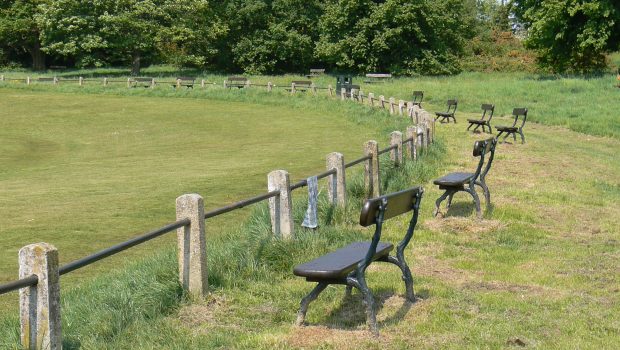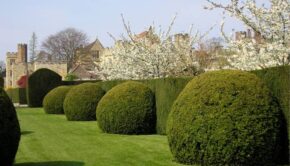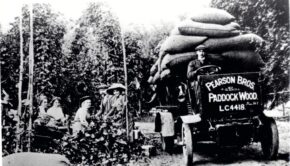Update from The Commons
What a difference a month makes! Because of the sandy, free draining, nature of the soils on the common, the effects of the recent heatwave are magnified and our grass has come to a halt. In just a few weeks, we have gone from lush green and concerns about having enough cuts in the grass cutting contract to get through the year, to an arid dust bowl; the grass below the Wellington Rocks now looks as though it could easily contain a pride or two of lions.
One irritating consequence of this is that we had planned the route for the Britain in Bloom judges to go through this area, so that they could admire the wonderful display of Heath bedstraw that flowered in the grassland this year. Sadly, it has all disappeared in the heat and I will have to waffle about the Victoria Grove, our heather restoration attempts and the anthills when judging takes place. We daren’t alter the route; the judges schedule is so tight that it is like a military operation. I have to deliver them back to the Mayoral car at the top of Edgcumbe Rd ten minutes after I meet them at Fir Tree Rd.
Another result of the heatwave, is the rapid evaporation of the water in most of our ponds. It is not unusual for many of our ponds to dry out and unless things change, it is very likely to happen again this year. Although you might assume this to be bad news for the wildlife that lives in the ponds, it is in fact one of the reasons why the shallow, acid ponds that are often found on areas of old heath, like the common, are important amphibian and invertebrate sites.
By this time of year, most of the amphibians are out of our ponds. For them, the important period is Spring, when they assemble in the ponds to spawn and then as the tadpoles and efts are developing into adult frogs and newts. In the last couple of weeks there has been a steady stream of little froglets leaving Fir Tree pond. Many of our invertebrates, such as damselfly and dragonfly nymphs, can spend several years in the ponds, slowly growing larger and going through a number of changes or instars, before they finally crawl up a stem, split their skins and emerge as winged adults. They survive the drying out of the ponds by burrowing into the mud until the pond fills with water again.
The things that cannot survive the drying out of the ponds, are of course fish. Fish are fierce predators of both tadpoles and efts, as well as invertebrates of all kinds. Larger fish, such as carp, tench or bream will burrow deep into the silt and mud, hunting midge larvae, shrimps and snails, as well as dragonfly nymphs. It is the absence of fish in our little ponds that enables them to produce such a surprising variety and numbers of creatures.
Unfortunately, we sometimes have to remove fish that have been released into our ponds. I assume this is usually a result of someone filling in a garden pond and not knowing what to do with the fish. Please don’t do this if you are in that position, not only can the fish disrupt the wildlife, they will probably end up dying as the pond vanishes.
Now that the ground is properly dry, we will be putting in two new surfaced paths, one on each side of Major York’s Rd on the Racecourse. Anyone walking in this area in the Winter knows how wet and boggy it can get, so these paths should make a big difference.
Steve Budden – Commons Warden






Comments